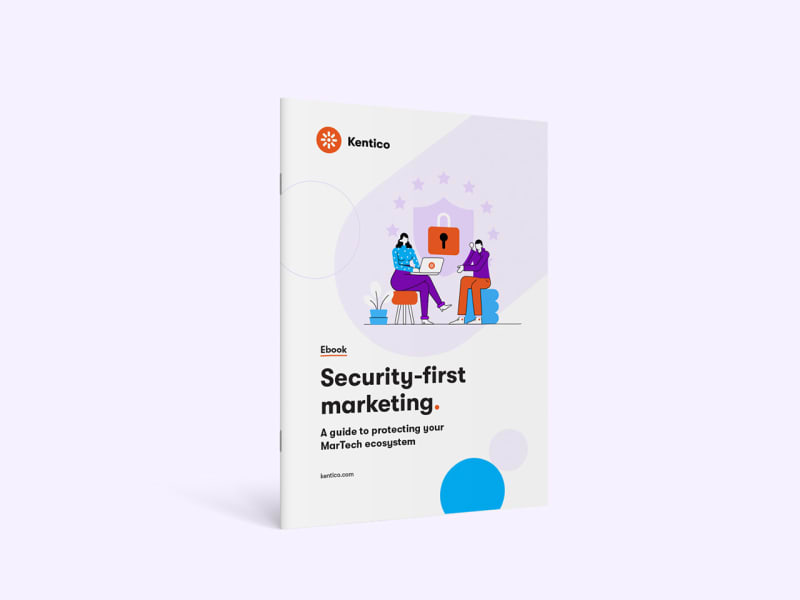Compliance isn’t just about meeting legal obligations—it’s about safeguarding trust in the digital world. From protecting sensitive data to ensuring your platform is secure and accessible to all users, staying compliant is critical for modern businesses.
This article explores the key regulations shaping privacy, accessibility, security, and industry practices, explaining what they mean and why they matter. Through mastering these standards, businesses can create secure, inclusive, and reliable digital experiences to encourage lasting customer confidence.
Regulations you need to know
Navigating the maze of compliance can feel overwhelming, but understanding the most impactful regulations is a great place to start. These laws set the foundation for how businesses handle sensitive information, ensure accessibility, and maintain security.
Here’s a breakdown of the key standards and what they mean for your business.
1. Data privacy and protection
Customer trust is directly linked to how securely and transparently their personal data is handled. Users now expect companies to treat their data with the utmost care. Non-compliance with data privacy regulations can lead to significant legal consequences and loss of customer trust.
On the flip side, prioritizing data privacy can help companies not only avoid penalties but to create long-lasting relationships with their users by giving them control over their information.
There are several key global data privacy laws that businesses need to comply with, and understanding these regulations is essential:
GDPR (General Data Protection Regulation - EU): It emphasizes user consent, the right to be forgotten, and transparency about data collection. It mandates that users must be able to request access to and deletion of their personal data. This regulation can apply to non-EU companies, as well.
CCPA (California Consumer Privacy Act - California, USA): CCPA gives California residents rights over their personal data, including the right to access, delete, and opt-out of having their data sold. It provides users with transparency on how their information is being handled by businesses.
LGPD (Lei Geral de Proteção de Dados - Brazil): Like GDPR, LGPD requires businesses to obtain clear and unambiguous consent for processing personal data. It ensures individuals have control over how their data is used, stored, and shared.
Australia’s Privacy Act 1988: Regulates how the government and large businesses handle personal data. It enforces privacy principles, mandates breach reporting, and protects overseas data. Violations can lead to heavy fines.
New Zealand’s Privacy Act 2020: Ensures safe handling of personal data with breach reporting, overseas data protections, and stronger enforcement powers. Serious breaches face penalties.
These regulations emphasize transparency, consent, user control, and data protection, which businesses must prioritize to avoid legal penalties and maintain trust with users.

Many companies assume compliance is a bureaucratic hurdle, when in reality, strong compliance practices drive customer trust, improve brand reputation, and even enhance marketing performance. With stricter privacy laws, companies that embrace first-party data strategies and consent-based marketing not only stay compliant but also strengthen customer relationships. At Kentico, we see compliance as a competitive differentiator—the brands that handle data responsibly today will earn the long-term loyalty of tomorrow.
2. Accessibility: Building inclusive experiences
Accessibility is more than just a legal requirement—it’s a fundamental right. In an increasingly digital world, it's essential that everyone, regardless of ability, can access and interact with online content. Ensuring accessibility means offering equal access to your digital content for all users and avoiding potential discrimination.
Non-compliance can lead to lawsuits, fines, or damaged reputation. Making your content accessible, however, can lead to increased audience engagement and positive brand perception.
WCAG (Web Content Accessibility Guidelines): The global standard created by the W3C (World Wide Web Consortium). WCAG outlines how to make content more accessible, focusing on areas like text contrast, image alt text, keyboard accessibility, and more.
ADA (Americans with Disabilities Act): In the U.S., ADA mandates that all businesses ensure that their websites and online services are accessible to people with disabilities. Failure to meet these standards may result in legal actions and hefty fines. The ADA emphasizes web content that can be easily navigated using keyboard commands and supports assistive technology, such as screen readers.
EN 301 549: A European accessibility standard that sets guidelines for digital accessibility in Information and Communications Technology (ICT). It’s particularly important for public sector and public-facing websites. EN 301 549 integrates various standards to improve digital accessibility, focusing on usability across all platforms.
These regulations collectively seek to ensure that web content is usable by a broader audience, regardless of their physical limitations or device constraints.
3. Security standards: Protecting user trust
Cyberattacks and data breaches are costly—both financially and reputationally. A breach can compromise user trust, damage customer loyalty, and lead to hefty legal fines.
Security compliance is more than protecting systems from threats; it’s about safeguarding the privacy of users, creating a sense of trust with your audience, and ensuring the ongoing success of your business.
ISO/IEC 27001: This is an internationally recognized standard for information security management systems (ISMS). It sets out a systematic approach to managing sensitive information, focusing on risk management, continuous improvement, and protecting data privacy and security through robust frameworks.
SOC 2 Compliance: SOC 2, specifically the Type 2 certification, evaluates a company's controls in five essential areas—security, availability, processing integrity, confidentiality, and privacy. It is especially important for companies that operate in the cloud or offer SaaS (Software as a Service) products. Achieving SOC 2 compliance provides assurance that sensitive data is securely managed and protected from unauthorized access or breaches.
NIST Cybersecurity Framework: Developed by the U.S. National Institute of Standards and Technology, this framework provides guidelines for managing cybersecurity risk. It addresses areas like identifying, protecting, detecting, responding, and recovering from security incidents. It’s especially important for organizations in the U.S. but is widely adopted globally.
Businesses can enhance their defenses against cyber threats and demonstrate to customers that their data is being handled securely with their compliance to these regulations.
4. Industry-specific considerations
Different industries face unique regulatory challenges due to the nature of the data they handle. Industry-specific regulations shape how businesses must approach data protection and user privacy, requiring tailored solutions to meet evolving legal requirements.
Healthcare:
In healthcare, protecting sensitive patient information is paramount. Regulations are designed to ensure secure handling and privacy, promoting trust between patients and providers.
HIPAA: Safeguards the privacy of patient health data and enforces secure handling of healthcare information.
HITECH Act: Strengthens electronic health record (EHR) requirements and promotes secure adoption of health IT.
Hear from our community of experts on the importance of inspiring trust on healthcare websites.

"The trust patients place in healthcare websites is deeply intertwined with how well their personal information is protected. By leveraging a secure DXP, healthcare providers not only ensure compliance with stringent privacy regulations like HIPAA but also guarantee that every interaction their website is safe and secure. This commitment to data security not only protects patient confidentiality but also fosters a lasting trust that is essential in healthcare relationships."
Finance:
Finance is heavily regulated to protect investors and maintain trust in financial systems. These regulations ensure ethical practices, accurate reporting, and resilience in a digital-first world.
FINRA: Oversees financial markets to ensure transparent, ethical practices for investor protection.
SOX: Mandates accurate financial recordkeeping and processes for publicly traded companies.
DORA: Enhances digital resilience in financial institutions, focusing on cybersecurity.
Explore how regulations in finance are impacting marketing teams.
Government/Public sector:
Security is critical when dealing with sensitive government data. These regulations protect federal information systems and ensure robust cloud service standards.
FISMA: Establishes security practices for U.S. federal agencies and their contractors.
FedRAMP: Sets security requirements for cloud services used by U.S. government agencies.
Legal:
Modern law firms are embracing digital tools to better serve clients—but they must do so within strict ethical and regulatory frameworks.
- ABA Model Rules: Guide lawyers on ethical responsibilities around digital communication. In 2024, new guidelines were added for artificial intelligence (AI) use.
Retail/Ecommerce:
In retail and e-commerce, handling payment data securely is vital to maintaining consumer trust and meeting industry standards.
PCI DSS: Protects cardholder data during online transactions, ensuring secure processing and storage.
5. Best practices for implementing a compliance strategy
Achieving compliance with various standards isn’t a one-time event but an ongoing process. For businesses aiming to create secure, trustworthy, and inclusive digital experiences, a proactive strategy is essential.
Here are a few best practices for integrating compliance effectively across your organization:
1. Conduct regular audits: Compliance isn’t static, and regulations evolve constantly. Businesses should perform periodic audits to assess their adherence to legal requirements and industry standards, checking for gaps that might expose them to risk.
2. Employee training and awareness: The involvement of employees at every level is key to maintaining a compliant platform. Regular training sessions on the importance of data privacy, security best practices, and accessibility guidelines can help ensure that everyone in your organization is aligned with compliance efforts.
3. Invest in secure & scalable technology: Building security and accessibility into your technology from the start is critical. Using frameworks and tools that help meet regulations will save time and reduce risks. Platforms like Xperience by Kentico not only comply with key regulations such as GDPR, CCPA, ISO/IEC 27001, and SOC Type 2, but are also designed to integrate compliance features seamlessly. This enables businesses to maintain a secure and scalable infrastructure while adapting to evolving regulatory requirements. Always evaluate your platform’s capacity to adjust to changing compliance landscapes as your business grows.
4. Foster a compliance-centric culture: Leaders should prioritize compliance by setting clear goals, providing adequate resources, and demonstrating commitment to the organization’s privacy, security, and accessibility practices. This attitude creates a company-wide culture that embraces regulatory requirements, making it easier to meet long-term goals.
5. Documentation and accountability: Maintaining clear documentation on how compliance is being managed, monitored, and achieved will not only help in the case of audits but also create a transparent system for accountability. Whether it’s mapping out data flows, tracking user consent, or testing accessibility features, having thorough records will ensure that you can prove compliance to regulators.
Compliance as a catalyst for success
In today's digital world, compliance isn't just about ticking boxes—it’s a key driver of business growth and innovation. Taking a proactive approach to compliance doesn’t just help you avoid problems; it opens the door to building stronger relationships, creating trust with your users, and setting your business up for long-term success.
So, embrace compliance as not just a requirement but as a competitive advantage—helping you grow, gain trust, and thrive in the digital age.

"Think about how to embrace these regulations into your journey rather than trying to work around them. Regulations generally exist for the purpose of protecting customers, and that's where the goal of a marketer aligns with the regulation. Translating a must-have into an improvement for your visitors' experience and positive brand emotion is a smart thing to do."
Regulations are always changing—see how your marketers can always stay one step ahead with our free ebook, Security-first marketing.


